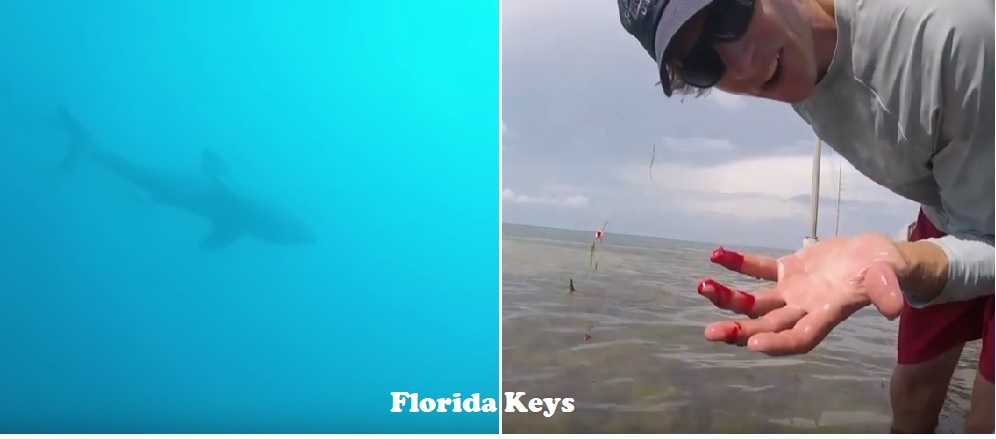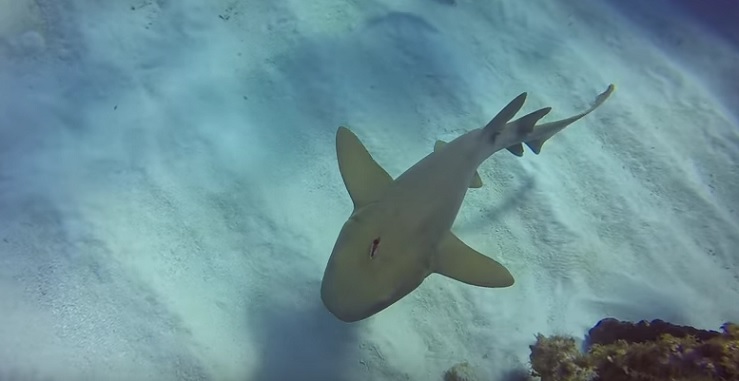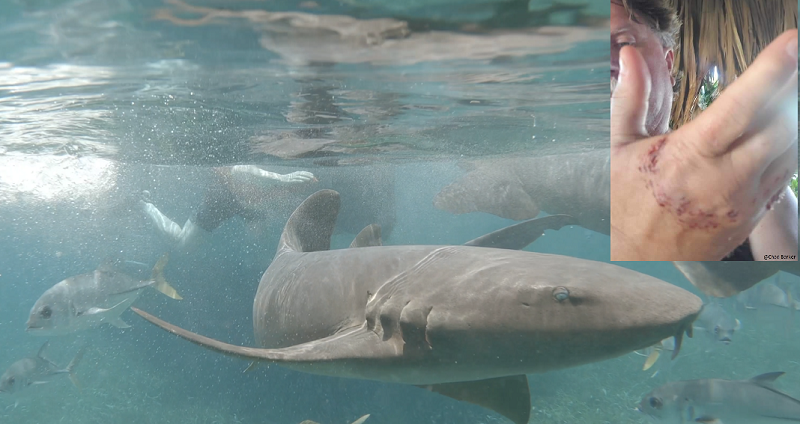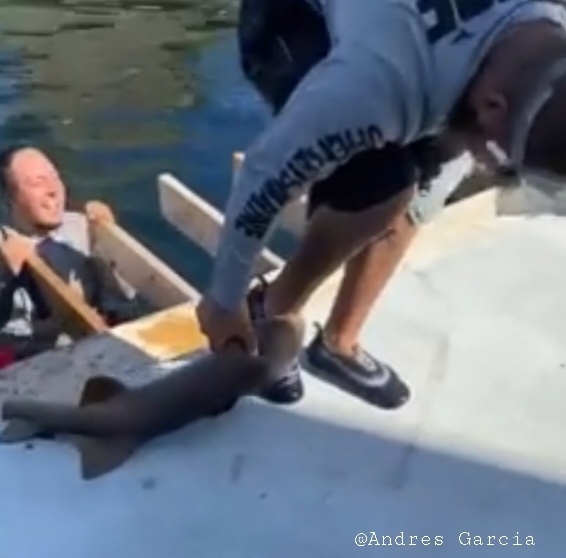Cody Wabiszewski was fishing near the Bahia Honda Bridge in the Florida Keys.
He operates Global Fishing Reports, a site designed for anglers to share information on the best fishing spots and newest gear and had hooked several sharks while targeting tarpon.
As a conservationist and engineer by trade, Wabiszewski practices catch and release. He tries releasing unwanted catches so they incur the least amount of stress. Unfortunately, on June 18, one fish bit back.
“I will say that I underestimated the shark’s suction power twice that day. First, I was just trying to get the shark to chase my bait which was a large dead mullet. It sucked in the large bait and got hooked more quickly than I expected,” he told Tracking Sharks.
He was attempting to release the shark while it was in the water. “This was a mistake because the shark was able to use the water suction to pull my fingers into its mouth.
“I was told, and had the impression, that nurse shark have mouths that are like sand paper and do not have teeth.
“While trying to remove a circle hook with my index and thumb the shark sucked in my other three fingers and bit down.
“I could feel the teeth cut into my skin. My first thought was, nurse sharks do have teeth!
“The shark grasped down for a few seconds. When it opened its mouth, I pulled my fingers out. I found out later that I was lucky because sometimes nurse sharks do not let go and have to be surgically removed.
“Also nurse sharks have enough crunching power to crush a conch shell and could have bit harder and crushed my fingers if it wanted to. The shark could also have started to roll like a crocodile which would have made the bite much worse,” the 31-year-old said.
Cody takes full responsibility for the interaction.
“This was obviously my fault and not the shark’s. The shark was released quickly after removing the hook. I really like snorkeling and diving with nurse sharks and will continue to enjoy doing so.
“I have talked to several people after this and they told me that people frequently underestimate nurse sharks, especially when spear fishing. Although the phrase ‘it is just a nurse shark’ is used frequently, these sharks should not be underestimated or dismissed as completely harmless.”
This is not the first shark interaction for Wabiszewski.
On May 16, 2018 Cody was doing his advanced diver checkout deep dive off the Keys.
The group was diving the Florida Keys’ Thunderbolt shipwreck.
Around 9 a.m. the group began their descent down to the wreck. At 70 feet down, Cody’s scuba buddy tapped him on the shoulder and pointed out a great white shark.
“I initially could not believe what I saw. My thought was that I must already be narked (hallucinating due to the depth) because that looks even bigger than a bull shark.
“A second look and I realized that it was a great white shark and tried to enjoy the moment,” he said.
The group descended to the deck of the wreck as the shark swam off into the distance.
“Once we hit the deck of the thunderbolt I thought, this is definitely an exception to the no camera rule and pulled out my GoPro.
“Luckily the shark passed by again. The shark was only slightly curious of us divers and showed no signs of aggression at any point.
“Dive instructor Chad Sawyer had worked in San Diego identifying great white sharks for 6 months, so he was a good person to have on the dive that day. Chad estimated the shark to be 15 feet in length and a possibly pregnant female,” he said.
“Sharks are amazing fish that are the most fun to see while diving. They can be fun to catch from a boat, but it is a better experience to see them swimming peacefully while diving or snorkeling,” he added.
Cody marked the interaction with a great white icon on his website Global Fishing Reports.
There have been a total of 56 shark attack bites (43 with injury, 10 of which are considered provoked*) publicly reported in 2018. One fatal**; 18 were reported in the U.S., with 7 occurring in Florida and 2 in Hawaii. Fifteen have been reported in Australia, none fatal. Six unconfirmed bites, worldwide, are not included in the total count.
All locations have been marked on the 2018 Shark Attack Bites Tracking Map.
*Provoked defined as spearfishing, feeding sharks, fishing, etc. (listed with green marker).
**One possible scavenge



